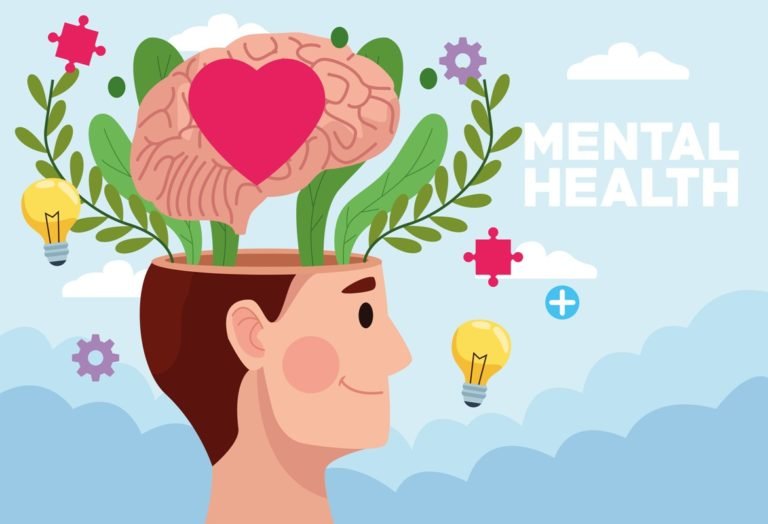Bipolar Disorder Symptoms, Classification, Causes, and Treatments
Understand bipolar disorder with insights into its impact on mood and daily life. Learn about effective management strategies and support to navigate this mental health condition with resilience.

Bipolar disorder also known as manic-depressive disorder (Bipolar Affective Disorder) is one of the most common mental health conditions. While the term “manic depression” is still often used in everyday language, it was replaced in formal psychiatric classification with Bipolar Disorder in 1980. Bipolar Disorder includes emotional highs, which are called mania or hypomania; and emotional lows, which are called depression.
Symptoms of Bipolar disorder
This mental illness is characterized by extreme mood swings and unusual shifts in behavior, thinking, energy levels, activity levels, concentration, sleep patterns; and the ability to carry out day-to-day tasks.
During mania, an individual behaves or feels abnormally energetic, euphoric, happy or irritable, and they often make impulsive decisions with little regard for the consequences. Extreme manic episodes can sometimes lead to psychotic symptoms such as delusions and hallucinations.
People who experience manic episodes experience features of both mania and depression at the same time. These episodes are sandwiched between times of normal mood, but it is not uncommon to see depression and mania repeating alternatively also known as rapid cycling. In “rapid cycling” bipolar disorder, the person will have four or more episodes within a year.
During the phases of depression, the individual may experience crying, feel sad and have a negative outlook towards life. The sufferer may have greatly reduced morale and motivation, feelings of hopelessness and physical sluggishness. The risk of suicide is high; other mental health issues, such as anxiety disorders and substance use disorders, are commonly associated with bipolar disorder.
Classification of Bipolar Disorder
Bipolar Disorder has degrees of severity and is not always experienced in the same way by those individuals who suffer from it. This disorder is classified based on the nature and severity of mood episodes experienced.
Bipolar I disorder
You’ve had at least one manic episode that may be preceded or followed by hypomanic or major depressive episodes. In some cases, mania may trigger a break from reality (psychosis).
Bipolar II disorder
You’ve had at least one major depressive episode and at least one hypomanic episode, but you’ve never had a manic episode.
Cyclothymic disorder (Cyclothymia)
You’ve had at least two years — or one year in children and teenagers — of many periods of hypomania symptoms and periods of depressive symptoms (though less severe than major depression).
Other types
These include, for example, bipolar and related disorders induced by certain drugs or alcohol or due to a medical condition, such as Cushing’s disease, multiple sclerosis or stroke.
The range in which Bipolar is divided is often referred to as bipolar spectrum.

Causes of Bipolar Disorder
The exact cause of bipolar disorder is unknown, but several factors may be involved, such as:
- Biological differences – People with bipolar disorder appear to have physical changes in their brains. The significance of these changes is still uncertain but may eventually help pinpoint causes.
- Bipolar disorder is more common in people who have a first-degree relative, such as a sibling or parent, with the condition. Researchers are trying to find genes that may cause bipolar disorder.
Treatments for Bipolar Disorder
Living with bipolar disorder can be challenging. Although such disorder is a lifelong condition, you can manage your mood swings and other symptoms by following a treatment plan. These tips and strategies will help you to manage bipolar disorder.
Medications
Certain medications can help manage symptoms of bipolar disorder. Some people may need to try several different medications and work with their health care provider before finding medications that work best.
Medications generally used to treat bipolar disorder include mood stabilizers and second-generation (“atypical”) antipsychotics. Treatment plans may also include medications that target sleep or anxiety. Health care providers often prescribe antidepressant medication to treat depressive episodes in bipolar disorder, combining the antidepressant with a mood stabilizer to prevent triggering a manic episode.
Psychotherapy or counselling
Psychotherapy, also called “talk therapy,” may be an effective part of the treatment plan for people with bipolar disorder. Psycho therapy is a term for a variety of treatment techniques that aim to help a person identify and change troubling emotions, thoughts, and behaviors. It can provide support, education, and guidance to people with bipolar and their families. Psychotherapy or counselling also help them recognize patterns and particularly the warning signs that mood is heading one way or the other and develop preventative or coping strategies.
Treatment may include therapies such as cognitive-behavioral therapy (CBT) and psychoeducation. Treatment may also include newer therapies designed specifically for the treatment of bipolar disorder, including family-focused therapy and interpersonal and social rhythm therapy (IPSRT).
Keep a Life Chart
Even when the proper treatment is going on, mood changes can occur. Keep a life chart and record such mood swings. Keeping a life chart that records daily mood symptoms, treatments, sleep patterns, and life events can help patients and health care providers track and treat bipolar disorder over time. Treatment is more effective when a patient and health care provider work together and talk openly about concerns and choices.
Lifestyle Changes
Some lifestyle choices can help maintain a stable mood and manage symptoms. They include:
- maintaining a regular routine
- following a healthy and balanced diet
- establishing a regular sleep pattern and taking steps to prevent sleep disturbance
- getting regular exercise
Don’t Isolate Yourself
When you suffer with this disorder, you may feel the urge to isolate yourself from others. You may not want other people to judge you, or you may not even realize you’re withdrawing. Don’t isolate yourself and do regular interactions with people surrounding you. You will need to have others that you can talk to, and this can help reduce your risk of having a depressive episode. Isolation and withdrawing from social interactions will worsen your situations. Having a strong social support system is crucial as you learn how to manage bipolar.
Your doctors and therapist can be part of your support system. Joining a support group of other people with bipolar disorder can also be beneficial. Make your relationships a priority, with friends and family . Family support and communication can help you stick with your treatment plan. It also help you and your loved ones recognize and manage warning signs of mood swings.
Reduce Your Stress
Stress can be a big trigger for people with bipolar disorder. Identify areas of your life where you experience the most stress. Explore better ways to manage stress, or eliminate it, if you can. For example, asking a family member or loved one with more help around the house can help you feel less overwhelmed.
If your professional life is causing you stress; think about what changes are possible and sit down with your boss to discuss your workload. Being solutions-driven and proactive rather than waiting until a stressful situation has gone too far can help you find long-term resolution in your career.
Educate yourself about your illness
Understanding the condition from which you suffer helps to reduce anxiety and provides a basis from which to take action to restore wellbeing. Educating yourself and knowing more about the disorder will help you understand the symptoms better and notice the trigger points. Knowing what’s going on also help you get the best support; identify issues; make a plan to prevent relapse and stick with treatment.
Meditation
Meditation is not a quick fix for bipolar disorder, but it can help you over time. One study showed that medication can help people with this disorder in the short term, and that meditation is helpful in promoting a more balanced mood over a longer period of time.

Mindfulness-based cognitive therapy (MBCT)
Mindfulness practices are now part of bipolar treatment methods. MBCT, which has shown promise for people with bipolar disorder, combines mindfulness practices with cognitive behavioral therapy. This study showed that two years after taking part in MBCT, people who continued to practice mindfulness still found that it improved their quality of life and helped prevent depressive relapses.
Another research in 2018; suggests that people with bipolar disorder who participated in mindfulness-based interventions, including meditation, had significant improvements in their depression and anxiety symptoms but not manic symptoms.
I hope, if you will use above tips and strategies for the treatments for Bipolar Disorder; you will surely be able to manage this mental illness in a better way.
That’s all from my side. I hope, you liked this article on mental health. Please share this on your favorite social media portals with your friends and relatives.
(Disclaimer: This article is for general information only. Before adopting preventive methods/measures/treatment, please seek medical advice.)






